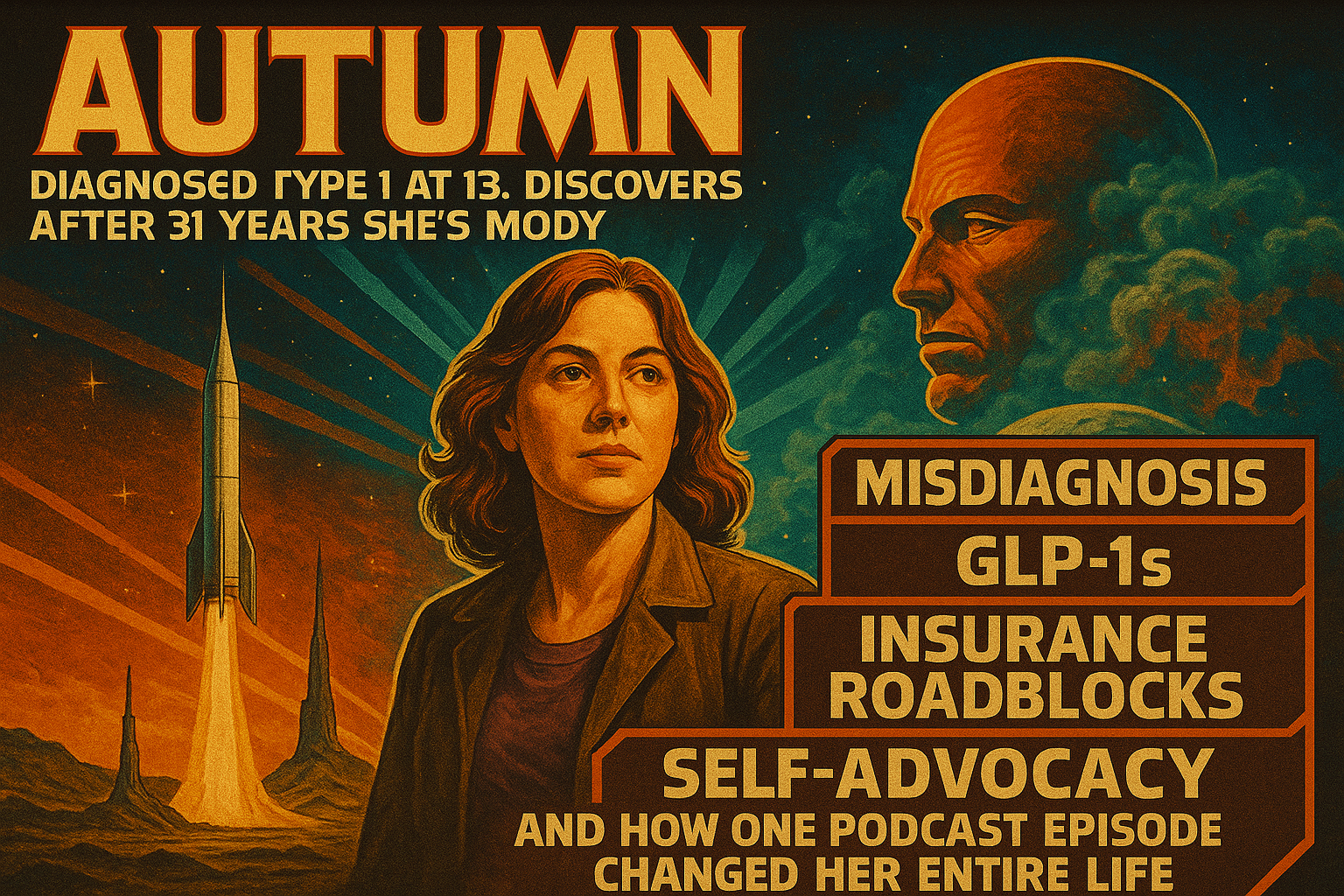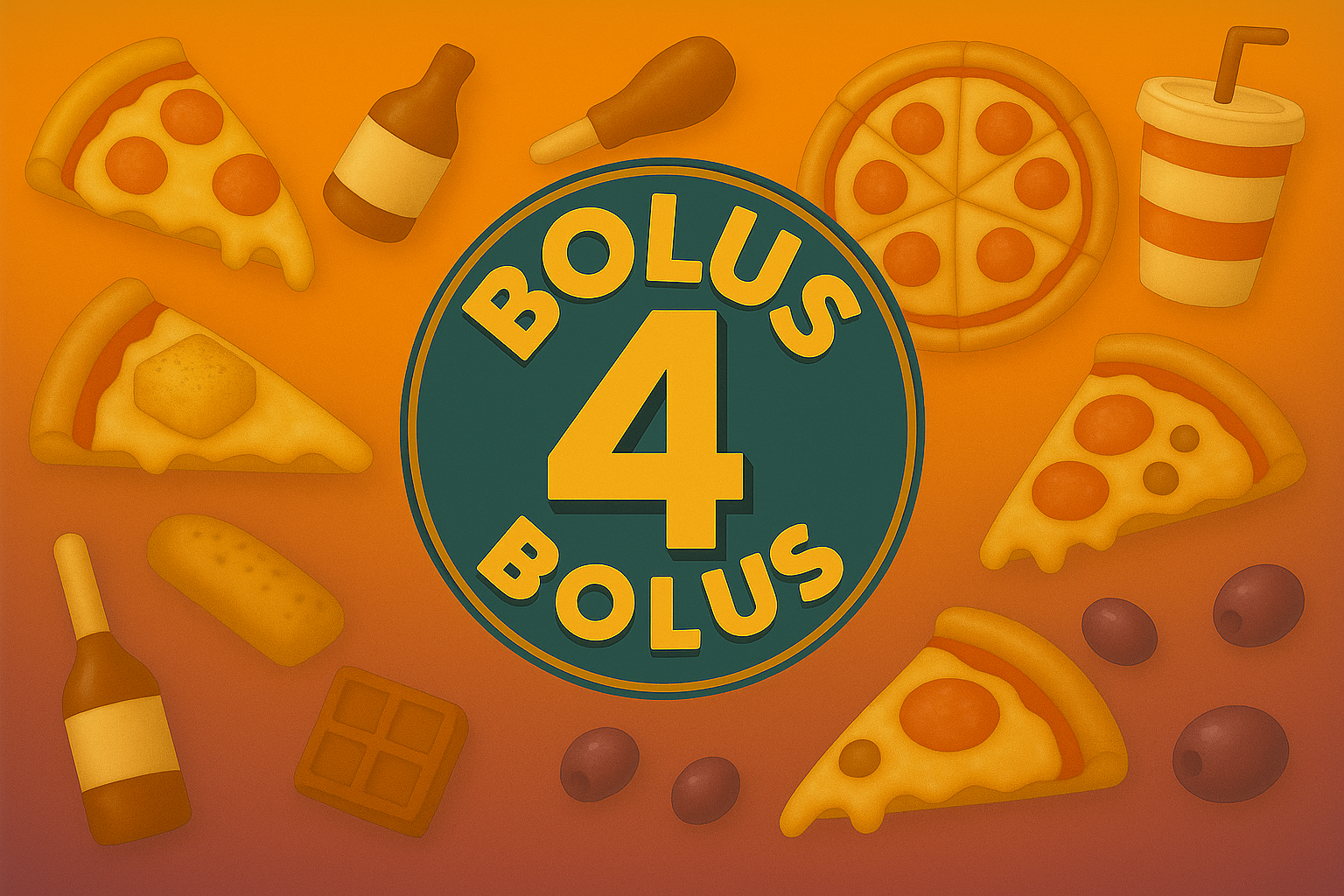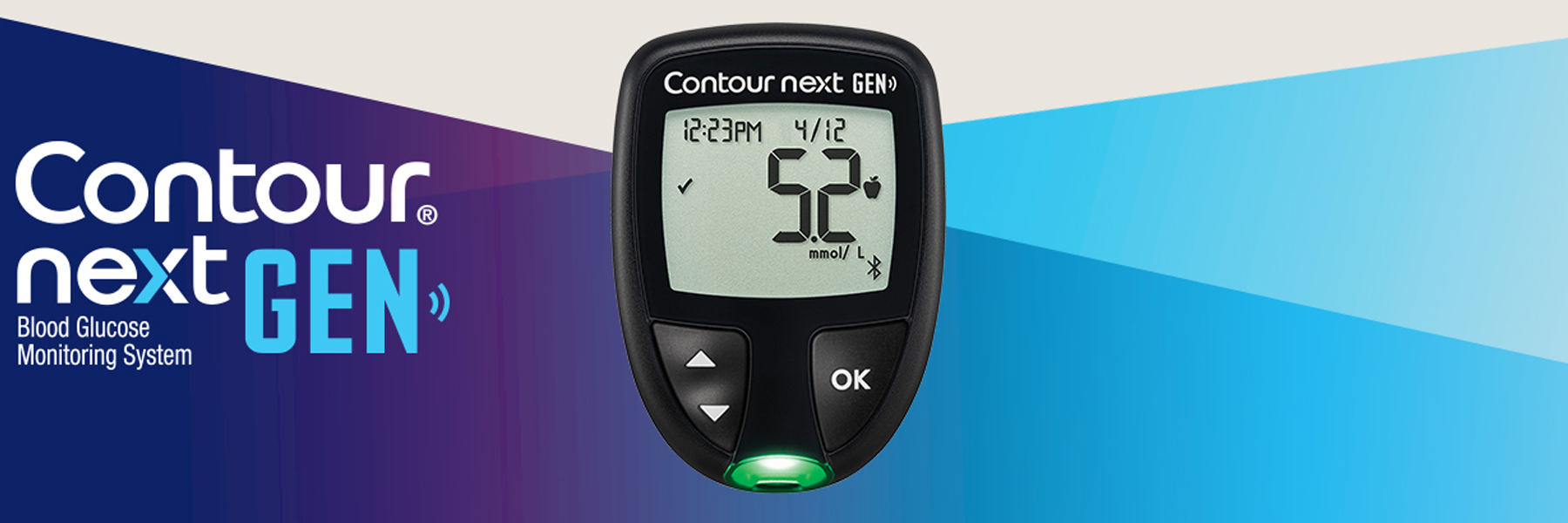#1613 Bolus 4 - Intro and Doritos
You can always listen to the Juicebox Podcast here but the cool kids use: Apple Podcasts/iOS - Spotify - Amazon Music - Google Play/Android - iHeart Radio - Radio Public, Amazon Alexa or wherever they get audio.
Jenny and Scott brainstorm the new series and the formula MEAL BOLT and then talk about bolusing for Doritos.
+ Click for EPISODE TRANSCRIPT
DISCLAIMER: This text is the output of AI based transcribing from an audio recording. Although the transcription is largely accurate, in some cases it is incomplete or inaccurate due to inaudible passages or transcription errors and should not be treated as an authoritative record. Nothing that you read here constitutes advice medical or otherwise. Always consult with a healthcare professional before making changes to a healthcare plan.
Scott Benner 0:00
Welcome back, friends to another episode of The Juicebox podcast.
In every episode of Bolus four, Jenny Smith and I are going to take a few minutes to talk through how to Bolus for a single item of food. Jenny and I are going to follow a little bit of a road map called meal bolt. Measure the meal, evaluate yourself. Add the base units, layer a correction. Build the Bolus shape, offset the timing. Look at the CGM tweak for next time. Having said that these episodes are going to be very conversational and not incredibly technical. We want you to hear how we think about it, but we also would like you to know that this is kind of the pathway we're considering while we're talking about it. So while you might not hear us say every letter of meal bolt in every episode, we will be thinking about it while we're talking. If you want to learn more, go to Juicebox podcast.com. Forward slash meal, dash, bolt. But for now, we'll find out how to Bolus for today's subject, please don't forget that nothing you hear on the Juicebox podcast should be considered advice medical or otherwise, always consult a physician before making any changes to your healthcare plan or becoming bold with insulin.
This episode is sponsored by the tandem mobi system, which is powered by tandems, newest algorithm control iq plus technology. Tandem Moby has a predictive algorithm that helps prevent highs and lows, and is now available for ages two and up. Learn more and get started today at tandem diabetes.com/juicebox All right. Jennifer, I have an idea, okay, and I've been workshopping it in my mind now for a few weeks, and I want to work through the rest of it with you now. Awesome. I'm very worried that I'm going to say something to you and you're going to go, oh, Scott, I already have that. And I don't want to steal your thing if that's the case, or maybe you don't, but I want to make a series of short episodes that's just about each episode is about bolusing for one food item. So imagine, right? So imagine that I might already have a list of hundreds of food items from listeners, and they're like, please tell me how to Bolus for this. Or, you know, this specifically, not just pizza. I want to know how to Bolus for Domino's Pizza, very specific stuff, not just cereal. I want to understand how to Bolus for Lucky Charms. Okay, that kind of stuff. And actually, good foods on the list too, Jenny, don't worry. Great. But when I started thinking about you, and I doing that, the first way I imagined it was me just saying to you, okay, Jenny, let's figure out how to Bolus for and then say the food item, and then us just talk it through, which I think is valuable, but I also think that there's got to be steps, like, whether we know it or not, there are steps in Our head about what we think about when we're bolusing, even if we're not actually thinking about it.
Jennifer Smith, CDE 3:05
Yeah, they're unconscious. They're sort of in a file cabinet. I've done this. I know how to it's almost like a behind the scene. Absolutely, there's their steps.
Scott Benner 3:14
Yes, do you have these steps written down? Ah, you don't. Excellent. Do
Speaker 1 3:19
I have steps written down for how I Bolus through things. No, that's 37 years.
Scott Benner 3:25
But like, what I'm thinking is, is that if there was a framework, then while we talk about it in each episode, we can use the framework, and then it'll become just a thing that happens without you having to know the framework. Can I give you the
Jennifer Smith, CDE 3:39
frame you can and I think it's probably while I don't have it written down, this is probably exactly how I teach bolusing for food, despite not having it written down, as I think about it, I know that I teach bolusing for food the same way, person to person and variable to variable. And then the one other thing that I was thinking about to, you know, you always talk about these ideas a little bit ahead of, you know, whatever. But my consideration too was, how do we bring into this Bolus thing for, let's say, an apple, and considering, then, is there something to adjust because of the aid system you might be using? Yep, right? So which I, I consider kind of, and I think you probably coined it. I don't think I've heard it anywhere other community in diabetes, but like the ninja level is now, you know, bolusing, you know the steps, but what's the system you're using? How does your algorithm work? Because that's going to make a difference in how you choose to Bolus for this particular
Scott Benner 4:52
food. Okay, I think this is going to be exciting. I'm pretty excited. So
Jennifer Smith, CDE 4:56
that was on, that was the only thing on this topic that I was like, You. This changes things, because people aren't just MDI and conventional pumps anymore, and
Scott Benner 5:06
I want them to, because CGM exists too, like all right. So here's how I have it laid out. I almost had it in an acronym, so close. Oh, so it's meal bolt, M, E, A, l, B, O, L, T, all right, meal measure the meal. So that step is list your carbs, fat, protein, glycemic impact, yep. E, evaluate yourself. Check your CGM, your blood sugar, insulin on board planned activity and stress level, okay. A, add the base units, calculate the food Bolus, the carbs divided by insulin to carb ratio. What is A? A is what add the base units? So the base units tough here. Okay, I'm trying to get an acronym in here. I don't know that we're going to end up with meal bowl, but I think the steps are here. So like, think about it right. List the carbs, the fat, the protein. Get that information. Check your blood sugar and your insulin on board. Am I about to go sit down on the sofa? Am I about to go for a run? Yep, now like calculate our food boluses using our insulin to carb ratio, yep. L, layer a correction look at the current blood sugar and the target. Use your correction factor right. Check on your insulin on board again. B, build the Bolus shape. Decide upfront percentage versus extended and duration. Yep. Offset the timing. Choose Pre-Bolus lead time or maybe a split dose. Okay. L, look at your CGM right to see to look for your curve. Are you on the way down? Are you on the way up? Maybe you need a little more. Maybe you need a little less. And then tweak for next time, log the outcome, adjust ratios split, so be flexible at the end. Yeah. All right, so I put it online, and people are like, that's a lot to remember. And I thought that's exactly what I think about every time I think about bolusing for food, but I don't consciously think about it that way.
Jennifer Smith, CDE 7:01
Well, that's why I said when you asked if I had steps 100% I have steps. They're just I've done them so much that I don't would have never come up with an acronym for them.
Scott Benner 7:13
Do you have any idea how hard it was to, like, sit down and go through it? I'm doing things so automatically, I couldn't find them when I was looking for them right away. It took me a while. Actually, I've been working on this for
Jennifer Smith, CDE 7:24
a while. Can I tell you what my favorite one of this is being the more type A versus that I tend to be. I really like tea tweak for next time. This encourages as much as people hate doing. It encourages some records. It encourages paying attention to the data that is all systems, even if you're just using injections, there is some place that's gathering that data for you that you can look back and say, Okay, I really want to figure out my apple, or I really want to figure out this great mark it down. Do these steps what didn't work. Tweak it for next time. That's my favorite step.
Scott Benner 8:08
Yay. So I think that everything's that's in these kind of like eight ideas. If you went right now and listened to the Pro Tip series, you'd hear they're there some version of that in the conversation, but it's very conversational. And I want these episodes to be small. I actually think I'm just gonna make them part of the small sip series, right? Like little tiny, like pieces of information. So what I was afraid was gonna happen was that I'd bring up a food, like choice, and then you and I would talk for a half an hour about bolusing for the food, because I think we could get lost talking about it. So I thought, like, we need a structure. Yes, yes, right? That's all so now, but, but what we really have to figure out is, is this actually, can there be fewer steps? Is this the step? Like, you know, like, that's the thing I want to figure out with you. So I'm gonna, like, I'm gonna actually make a thing and send it over to you. Okay, hold on one second.
Jennifer Smith, CDE 9:02
And for clarification, we're also talking about some of these foods will be simple, one item, foods like Apple, for example, and some things will be mixed meals. In fact, many of these are likely to be mixed meals
Scott Benner 9:17
as we go, yes, but in the beginning, you
Jennifer Smith, CDE 9:21
have them in order, from easy to hard. I'm still working on that. Okay,
Scott Benner 9:25
yeah, in the beginning, what I want is an encyclopedia of there must be like, I know I'm gonna say something crazy, like 50, but there must be like, 50 food items that most people eat, right? And
Jennifer Smith, CDE 9:40
most people have 20 to 25 themselves that are consistent over and over. Yeah,
Scott Benner 9:45
okay, I just sent you a link in your text. Okay, all right. So, so we'll, we'll look at these items, and I think we should practice a little bit, and then we'll like you and I will practice together, and then that's how we'll you. Start get these steps in order so that they're ready for when the next time we get on and we just start, like, because you guys don't know how Jenny, I make these, but we'll basically sit down for an hour and just hammer out as many as we possibly can, and you'll hear them five six minutes at a time. Like, so looking at it, tell me when you have it in front of you. I've got it in front of me. Is there anything glaringly missing, right? Like, really think about it like you're looking at food. How many carbs are in it? That's obvious. Is there fat or protein in it? Am I gonna have to Bolus for that? Yes. Is this a high glycemic or a low glycemic? Like, is it gonna hit me hard and fast, or is it gonna hit me, you know? Like, is
Jennifer Smith, CDE 10:36
it along with this? I think in measuring the meal, I think that's an
Scott Benner 10:40
appropriate I guess it's complete. We don't need anything else in that thought. I
Jennifer Smith, CDE 10:44
don't think so. But it also, when you're measuring, what are your look you're looking at measuring includes portion, how much are you eating, right? So beyond glycemic impact, there's also glycemic load, okay? And I think that that's valuable, because if we don't address portion size in the measure and talk about the impact or the difference that that can make, I think it may we may miss something right. We don't
Scott Benner 11:13
want to tell somebody how to Bolus for a bagel, but not talk about what would happen if you were going to eat three of those bagels, correct? Yeah, yeah.
Jennifer Smith, CDE 11:24
And my favorite one in that is watermelon, right? Watermelons got a really high glycemic index, but a portion, a single serving of it, doesn't have the load impact of eating four cups of it at a time, same glycemic index, but the load is what makes the difference, and then Bolus timing and all that kind of stuff goes along with it.
Scott Benner 11:45
Quite a handful or a cup of of watermelon, that's one thing. If I'm at a picnic and someone takes out a giant knife and slices off a two inch slab of it, and I sit down and shove it into my head, that's going to be different. Okay, so I added load to that. So list, carbs, fat, protein, glycemic impact and load, all right? The next step, evaluate yourself, check your CGM, your BGM, insulin, on board planned activity and stress. Is there anything else that the people could quickly assess about themselves?
Jennifer Smith, CDE 12:15
No, I think evaluate is. I think you've got everything here that would make sense. Okay. I mean, all evaluate yourself is not only where are you sitting in terms of hard numbers, but also what do you have going on? And those are the outside things, like variables that stress, illness, activity level, etc,
Scott Benner 12:38
right? Okay, the next one. I don't even know if I love the way I have this, like, add the base units, but calculate food Bolus, carbs divided by insulin to carb ratio. So calculate your food Bolus, so it doesn't have to be meal bulk, by the way. Like, I don't care what the acronym is. By the time it's over, this episode is sponsored by tandem Diabetes Care, and today I'm going to tell you about tandems, newest pump and algorithm, the tandem mobi system with control iq plus technology features auto Bolus, which can cover missed meal boluses and help prevent hyperglycemia. It has a dedicated sleep activity setting and is controlled from your personal iPhone. Tandem will help you to check your benefits today through my link, tandem diabetes.com/juicebox, this is going to help you to get started with tandem, smallest pump yet that's powered by its best algorithm ever control iq plus technology helps to keep blood sugars in range by predicting glucose levels 30 minutes ahead, and it adjusts insulin accordingly. You can wear the tandem Moby in a number of ways. Wear it on body with a patch like adhesive sleeve that is sold separately. Clip it discreetly to your clothing or slip it into your pocket head. Now to my link, tandem diabetes.com/juicebox to check out your benefits and get started today.
Jennifer Smith, CDE 14:00
No, the way you have this is correct, though, because the beginning steps of first you've measured, you know exactly, not exactly as precise as possible, what you're doing, right, and what the content kind of looks like. And then you're saying, Okay, well, my blood sugar's starting here, it's going up here, it's dropping here, I'm already low, blah, blah, blah. And then you're getting a calculation of knowing BG and knowing carbs, you're calculating what the dose would be just for the food to begin with. And then the next step is adding kind of a coating to that if needed a correction, or even taking insulin away, it could be correction in one way or another, more or a little bit less, yeah. And then the deciding pieces come in with the second word, which you know, the B, O, L, T, right when you're building in how you're gonna Bolus,
Scott Benner 14:52
Yep, yeah. So now we have, like, what the situation is, what situation I'm in, what are the details? Cells of how this insulin is going to get measured. Am I correcting for a blood sugar that exists already one way or the other? Like, you know, I know people hear that and think, Oh, if I'm 150 I need the meal, plus the, you know, the correction for the 150 but also you might get hungry and be 65 so we can still Bolus for that too. If we then look at the rest of it right, like, the side upfront percentage versus, am I going to extend this and how long am I going to extend it for? So build the Bolus like, shape like, think about how I'm going to apply this insulin to the situation. The B and the O kind of go together honestly, right? Because, you know, am I going to put it all up front? Am I going to spread it out? Am I going to spread it out for three hours? And how much of it is needs to be pre bolused? Right? Is kind of another way of thinking about it, because I don't know that like putting pre bolusing and split dosing together is really much I mean, is a split dose really much different than an extended I think that's kind of the same
Jennifer Smith, CDE 15:59
thing it is. But again, the way that, as you said, the build and the offset and they kind of go together. Sure they do, but for somebody who is newer, maybe to considering how to approach a meal, let's say they've used kind of pro tips, right, and now they need something like this as a stepping piece of in their decision making, because this brings it together. It kind of condenses all the pro tips in a way, which is, is nice somebody like me, all of these, they just float together like it's a quick, quick, quick, quick, quick decision. And if I had to, I guess I would have listed them like I had to think about a plan, but my brain just goes through these automatically.
Scott Benner 16:45
Yeah, you know. And I think that it does for most people, but there are still so many people online that are just like, I don't know how to Bolus for this item. And what that makes me think is they don't really know how to use their insulin well yet. But instead of continuing to tell them, like, Don't worry, you'll get it. You'll figure it out, which I do think is true. You know what? If there was a, like, a short Encyclopedia of 2040, 50 items that you just heard somebody say, because we're going to take a label and actually walk through this like, that's how you and I are going to handle this, right? If I figured that out for my basic stuff, and I did it over and over again, wouldn't there, like, that magic part you're talking about, where you just kind of know when it all comes out of your head, right? Like, maybe that would get them to it more quickly, is, like, kind of my hope also, you know, Jenny, there's stuff that I've thought I wanted to put into the podcast, and there's stuff that people have told me I should put in the podcast. And oftentimes those things are not things that occur to me. This is one of them. People have been asking for this for years, and I'll tell you the other thing they want us to do. They want us to break graphs down. Oh, and I always talk about, like, by the way, this might be the next series, but like, I always say, well, like, how am I going to do that without visuals. Like, the people listening can't see the graphs. And somebody said to me the other day, I was like, spitballing with a few people, and they said, why don't you just name the shapes? Because we all know them, right, right? Like, there's, like, you call them excursions at meals, but, like, a meal spike, right? There's a slow drift, there's a drop, a drop. Like, there's probably not that many different shapes on the graph. Most of us already probably think about them a certain way. Name them and then talk about the graph. And I was like, All right, I'll talk to Jenny about that and see Sure, let's, let's focus on this first Yes, yes. Okay, so you know, how long is the pre e Bolus gonna be? Then this is a step that I think can get lost. Like, look at your CGM, right? You know, Spot check your CGM. Are you one hour, three hour, five hours. Take a look at the curve. Are you on your way up? Are you on your way down? The way I talk about that in the Pro Tip series is I always tell people like, go to the three hour CGM line, go to the last three dots and see which way they're curving and like that gives you an idea of what what direction your blood sugar is going into. But I like the idea of thinking that part through for a half a second, because that's the one thing I still think I don't really get Arden to pay attention to all the time, is the trend. It's nice that you're eating. It's nice that you're Bolus sing for it. It's great that you're pre bolusing for it. But if you are pre bolusing 10 minutes before you were about to go from 150 to 220 I mean, you were screwed already. Anyway, yeah, right, right. And then your favorite one.
Jennifer Smith, CDE 19:33
The other thing is, in the look at the CGM, it is a slippery slope, so I think that it's valuable to point out when we're encouraging look at the CGM, the idea of spot checking at specific points along the post meal time period. And in the case of what we're trying to do is bring up specific foods or. Types of meals. If this is your meal that you really want to figure out, looking at the CGM doesn't mean every single day for every minute you're looking at your CGM, yeah? This
Scott Benner 20:09
is why you're learning how to do it right, like, right? Yeah. This is a
Jennifer Smith, CDE 20:13
spot check the Domino's Pizza at an hour. How are we looking you had a strategy in mind. The other piece to looking at the CGM is not being reactive, because you're trying to learn
Scott Benner 20:28
Yes. So like, just don't, like, freak out every time you see some like, let it play out so that you can, yes, you can figure it out. Like, so it's funny because you you kind of key down on one side to look at the CGM, and I keyed in on the other side for me, like, which is like, pay attention to where you are before you make this Bolus, but after you make the Bolus, the spot checking, like, go back an hour, three hours, five hours. Like, what's happening now, did this work the way I expected it to? If not, what am I seeing before CGM? So can you imagine the first person who figured out, like a fat rise, like, you know what I mean, like, without that, like, how many times they must have checked their blood sugar to be like, I'm telling you, if I eat a french fry, my blood sugar goes up faster than if this happens. You know, you've made these good decisions. You've you know, you've taken these steps. You put the Bolus in. An hour later you're still stable. Awesome. You know what I mean? Like, three hours later you're getting low, that'll help you with the Tweak for next time. Right, right. Maybe I didn't Pre-Bolus correctly, or, you know, whatever. And the
Jennifer Smith, CDE 21:27
only way that you can get, and I think that's why it is my favorite, the only way that you can really, truly get to tweaking what was an initial attempt is to really only do those spot checks. It's not a minute by minute, watch and react and hyperventilate because something's going on. It's a I am testing something out in order to adjust it for next time I have to let the scenario play out. Yes, I made a decision. It looks like my decision was not correct, but I'm gonna let it work itself out, because next time now I can spot what to
Scott Benner 22:05
change. This is a granular breakdown of the Eminem story that I tell in the Pro Tip series of somebody who just one day was like, Oh, I have a CGM now I can figure this out, and I'll put the insulin and see what happens. You can't, like, Jenny said, you can't, like, 10 minutes into it, freak out, like if you asked me, you know, at what point after a meal, Bolus, do you think, Oh, we missed. I need more insulin. I have an answer, but that answer is also based on me really understanding all these other steps that we just talked about. So while you're learning you can't just because you're just guessing the wrong direction, you'll cause, you'll probably over Bolus, cause a low or you'll eat at 120 because it's starting to go down and freak yourself out. And sometimes you just gotta wait. Okay? And
Jennifer Smith, CDE 22:47
the reason for these steps again, well, put together the very first step is what measure. So at the end of all of these steps, where you are watching the CGM trend, you know that your beginning pieces were well considered. It wasn't the random, I don't know it looks like 98 grams of carb, and this is what I put in, and this is the meal I'm no, no, no. Like, if you really want to figure out again your pizza or whatever it is, then take the
Scott Benner 23:21
steps, yeah, and you'll get there more quickly, because, yeah, this should work if you're swagging too, yeah, like, right, but you just might have to eat more pizza to get to the answer.
Jennifer Smith, CDE 23:30
And eventually, when you when you swag There's historical perspective to swagging. Yeah, you know when I go someplace and I'm on vacation and I am eating out 100% that's a swag. I mean, majority of the places that you go when you're on a vacation are not national chains.
Scott Benner 23:51
Yeah, right, yeah. You have no idea what you're eating. But I
Jennifer Smith, CDE 23:54
also know that I'm not going to choose the octopus plate, because I don't eat octopus so I usually on a menu. People are still more creatures of habit, right? They're more I know what I like. I'm going to choose something within the realm of my preferences, and because of that, I have some history around a food like this, yeah, so swaging becomes easier,
Scott Benner 24:19
sure. And I think that this process gets you to a place where you you talk about the way Jenny did earlier, like, I don't know, I know I do these things, but I don't think about them, right? But in the in the beginning, I just, I think this will be interesting, and there's a entire section of people listening who genuinely want this. So yeah, and they'll be sure that's awesome. Yeah. So now, do you have time to pick one thing and or do we do it next time we have
Jennifer Smith, CDE 24:44
let's see what do I'm full of my schedule. Look at your schedule. It's very
Scott Benner 24:47
busy schedule. People, people clamoring to speak with Jenny.
Jennifer Smith, CDE 24:52
Line out the door. I have about 15 minutes. Okay, so
Scott Benner 24:57
let's do this, since we have so maligned to read. Do's in the nutrition episodes, all right, let's use Doritos. Yeah, let's use Doritos nutrition
Jennifer Smith, CDE 25:08
label. Hold on, fabulous. Oh, poor Dorito Doritos took it hard, actually, everybody, right? They took it hard. But I guarantee that every time we said Doritos, people are like, Oh, Doritos. I haven't had Doritos in a really long time. I don't
Scott Benner 25:23
care about being healthy. They are so good. Okay, I've got a picture of a of a nutrition label from a Doritos bag. This is going to be clunky the first time because we don't have this worked out. Give a pen. Can you jot down something?
Jennifer Smith, CDE 25:37
I have a pen and I have a piece of paper?
Scott Benner 25:41
Yes. So let's start with the just so you know the serving size of this Doritos thing is, it's, oh, wait,
Jennifer Smith, CDE 25:47
wait, can I, can I guess what the serving size? Does it give it per chip? It's
Scott Benner 25:51
a grab bag. Oh, let me get it. Maybe I should get it off of a large bag so that I have how many chips it is. Hold on a second,
Jennifer Smith, CDE 26:00
because I want to try to guess how many chips is a serving?
Scott Benner 26:03
I think it's gonna be one. That's fun, yeah, they're like, oh, there's only 1000 grams in this. How many is it? Oh, don't, don't worry about how many for the serving.
Jennifer Smith, CDE 26:12
Well, I think it also begs a description of the difference between serving and portion. Yeah, right. Oh. Serving is what the label tells you is a single side or a single, you know, portion, and that's what everything on that label, then, is associated with that particular serving. Your portion might be for servings according to what the bag lists as a serving. I think it's a very valuable difference to make. What you put on your plate may be your portion, but I guarantee it's probably not one serving per the bag.
Scott Benner 26:47
So a nine and 9.25 ounce bag of Doritos, nacho cheese flavor tortilla chips contains approximately nine servings. So we're calling what a serving? An ounce? Yes. Wait. Is that gonna be like? That's just a few chips.
Jennifer Smith, CDE 27:01
It is usually from tortilla chip. Historically, is somewhere between nine to 12
Scott Benner 27:11
chips. This has it as 12. Oh, it has it as well. I
Jennifer Smith, CDE 27:14
just want to hear you guess first. Yes, nine to 12 is typical for tortilla
Scott Benner 27:18
chips. Okay, so 12 Doritos is a serving, okay? That's 150 calories, okay, it's eight grams of fat, okay, a gram of saturated fat, okay, fair amount of sodium in here. But that's what do we care about, sodium? Well,
Jennifer Smith, CDE 27:34
we care about sodium, but not from a store from, not from a standpoint or a Bolus thing, all
Scott Benner 27:39
right? It's 210 milligrams, just for that. Carbs. You wanna guess carbs
Unknown Speaker 27:45
for 1219,
Scott Benner 27:46
18. See, that's pretty close. Dietary Fiber, one sugar, one protein, two, calcium, calcium. How they get calcium into it? I
Jennifer Smith, CDE 27:57
would guess calcium is probably pretty minor. It's probably like one or 2% but it's because
Scott Benner 28:03
their daily value.
Jennifer Smith, CDE 28:05
If there's milk, there's some type of and I would expect it's also an enriched or a fortified product. So I would expect some of these are also added back pieces.
Scott Benner 28:15
Okay, yeah, there's potassium in it too. It's interesting, not an amount that you need. Okay, so, but that's not the point. So now we are, let's be a person who's, I mean, we got to keep this easy, right? Like, my insulin to carb ratio is one unit for 10 carbs,
Jennifer Smith, CDE 28:30
and we're following our steps. Measure,
Scott Benner 28:33
yeah, and, and, let's, let's, let's set up this person. Let's do, one unit is 10 carbs. That's our insulin to carb ratio. One unit moves us 100 points that
Jennifer Smith, CDE 28:45
way. So we've got a correction factor of 100
Scott Benner 28:48
Yeah, just to keep everything simple, okay, and and then we have to give the person a blood sugar, all right, so let's start, because this is us just practicing. Let's start with like, a blood sugar. We're not looking to correct 100 Okay, let's just
Jennifer Smith, CDE 29:04
do that. That's the unicorn number, right? Everybody takes pictures of 100 right? Yeah, I
Scott Benner 29:08
take pictures of 70 sixes. But okay, so, okay, so person has the blood sugar of 100 their one unit moves them 10 carbs. One unit moves them 100 points. They're going to eat Doritos. Now, let's go back to our list. All right, we've evaluated the carbs. There is fat in it. Yes, is it fat that we're going to need to Bolus for it in an extended way?
Jennifer Smith, CDE 29:31
No, in one single serving. No 12 chips. No, what if I eat the whole bag? Jenny ate the whole how many servings? Do you say? Five servings in a bag? Oh, nine, yeah. Oh, my God. Well, what's Scott, what's your math? Nine times eight is what
Scott Benner 29:45
70? That would be 72 grams of fat.
Unknown Speaker 29:47
Wow, that's a lot of fat. Oh, my goodness, it's
Scott Benner 29:50
only nine ounces of Doritos. Jenny, this easily could happen during I'm watching mob land on Paramount plus, right? Now, easily, right, right? You don't know mob land. You. I don't know Rob land, I don't, yeah, it's neither here nor there. So, so, okay, that's a good point. Like, so is it one? Let's say they're eating one serving. The hell is eating 12 chips? All right, okay. He's like, I haven't had 12 chips in a year. That Dorito is insulin to carb ratio is one to 10. We're going to be having 18. So, you know, I'd go two units, just for fun, but it's one. What is it? 1.8 units,
Jennifer Smith, CDE 30:28
right? One to 10 at 18, yep,
Scott Benner 30:31
and it's going to be, I don't think the impact is going to be crazy, like, I think any kind of a reasonable I mean, if, if my blood sugar is nice and stable. There's no insulin on board, and I'm having 12 chips. I mean, I think a Pre-Bolus of five to 10 minutes probably get you there. Do you think more? Do you think more?
Jennifer Smith, CDE 30:52
What I know about the processed nature of chips and the fact that these have fat, but it's not a considerable amount of I mean, eight grams is eight grams, but it's not like 50 at once, right? The fact of the matter being that these chips are, they're processed. What are Doritos? Are they corn? I don't
Scott Benner 31:12
even know. I'm sure there's corn in them somewhere,
Jennifer Smith, CDE 31:15
whatever the ingredients are. I don't even know. I can find out. Feel like I should
Scott Benner 31:18
know that. How would you know that,
Jennifer Smith, CDE 31:22
I feel like I should know. I would guess corn. Corn is there wheat.
Scott Benner 31:26
I'm looking for an image I can blow up and see corn, vegetable oil from sunflower, canola and or corn oil, something called malted dextrin, made from corn less than 2% of the following salt, cheddar cheese, milk cheese, culture salt, enzymes, whey, mono sodium,
Jennifer Smith, CDE 31:48
glutamate, glutamate, butter, MSG, buttermilk,
Scott Benner 31:52
romano cheese, part skim, cow's milk cheese, cultures salt, enzymes, Romano cheese, cow's milk cheese, culture, salt enzymes, whey protein concentrate, onion powder, corn flour, natural and artificial flavor, dextrose, tomato powder, lactose spices, artificial colors, yellow, six, yellow, five, red, 40. Lactic acid, citric acid, sugar, garlic powder, skim milk, red and green bell pepper powder, the sodium inosit Nate, the sodium guilate, potassium chloride and sodium calcium. Eight contains milk ingredients,
Jennifer Smith, CDE 32:36
so mostly corn, right? I think so corn. And then what struck me there was kind of funny. It's not really anything here and there, what we're doing, but is the fact that they have naturally an artificially flavored dextrose. Like dextrose is just sugar, right? We have to artificially flavor it in Benner Rita,
Scott Benner 32:54
I might not have had a comma, natural and artificial flavor. Comma, dextrose.
Unknown Speaker 32:59
Sorry. Anyway, that
Scott Benner 33:02
was just sorry about that.
Jennifer Smith, CDE 33:04
No, no, it's all good. But corn, that was my purpose in, yeah, going back now in the Bolus strategy, right? Because we're on the step of building the Bolus shape, and that includes the timing the Pre-Bolus, right? So we're really looking at, you're at a stable looking blood sugar. No, iob, you haven't treated anything in the past. This brings in and builds in the variables you might be considering, right? And my expectation is that you'd need at least a 10 to 15 minute Pre-Bolus. Okay, for
Scott Benner 33:34
Doritos, 10 to 15 minute Pre-Bolus, by then, you're not even gonna want the Doritos anymore, so you might as well give up. Seriously, right. Do I have to split the dose? No, not for Doritos, okay. And when do you think I checked to see if I missed on this?
Jennifer Smith, CDE 33:49
Yeah, great, because these are more processed, again, like most packaged snacky kinds of foods like this, I would be checking at the one hour mark, because, again, these are more true carbies, and they're going to have an impact that tends to be a bit quicker. And also, because you're not eating in this environment, we're talking about single food digestion, kind of like glycemic index was sort of, you know, established. It's an in and out. Okay, so you're usually going to have potentially a quicker rise followed by a quicker plateau point, based on your timing of insulin and what you know about how your insulin works for you, with a finish out and aiming to be back at baseline again, if you've tested all of your other settings, etc, does
Scott Benner 34:39
any of this change for you if it's three servings,
Jennifer Smith, CDE 34:42
I would expect it would change
Scott Benner 34:43
if it were three servings, yes, how so do you think
Jennifer Smith, CDE 34:47
that first step measure the meal? Now we're looking at what, 36 grams of 1812, chips, 18. So that's a heck of a lot more carbohydrate. So we are not changing like. Glycemic index, but we're changing the glycemic load. We're changing how much of this is actually going in. I would expect that Pre-Bolus timing probably about the same, because the more of a food that you have, it's still going to take you longer to eat that many chips compared to just eating 12 chips. Now you're eating a lot more chip, 36
Scott Benner 35:22
chips. It's 54 carbs. Yeah, all of a sudden I just hit me, like, these conversations gonna be great for people, because I don't think anybody thinks about it that way. You know what? I mean, a handful potato chips, 15 carbs. I go, like, right? You're at the next handful. I don't even know if you're like, you've got it in your head the same way after that.
Jennifer Smith, CDE 35:40
And what a great time of the year. I mean, I don't know when these episodes will come out, but what a great time of the year to be discussing this. Because where are we? We're heading into most kids getting done with school, heading into summer, heading into a lot of vacation time, heading into a lot of family or gathering type of spaces, cookouts, et cetera. And what do we have at most of those things, it's not your usual, prepared, great stuff that you focus on eating at home. It's everybody brings something along, and most often, what's on the table, chips and potato salad. Exactly. We're
Scott Benner 36:17
gonna have burgers later. Kids, fruit salad is everyone's grandmother not put three baskets out with three paper towels in it and run around and dump three different kinds of potato chips in them and go, Hey everybody, like, you know, like, I just want everybody to be happy and dead. So okay, now, you know, this person's blood sugar is 150 before they start. And now my heart that changes the Pre-Bolus time, because I like to see a falling blood sugar before, like, you know what I mean? Like, if you, if you're 150 and you throw in a Pre-Bolus for, you know, 56 carbs of Doritos, and 10 minutes later, you're like, Oh, I'm eating now, but your blood sugar hasn't moved. I mean, I think you're 185 in 10 minutes,
Jennifer Smith, CDE 37:00
you're going to be rising and again, that also begs, you know, evaluate, which is your second step. Evaluate, where are you? Is that 150 stable, and you've been stable and just hovering there? The correction for adding into the food Bolus, maybe it takes hold a little bit faster and starts that drift down that you're looking for before you start to eat. And this then begs the consideration of evaluating your CGM along the way, even because don't get hard tied, I guess is my point to an actual I always Pre-Bolus 10 minutes. My Pre-Bolus is always 15 minutes? Well, maybe that has to be a floating a variable, depending on where are you and where are you headed. If the 150 is stable, flat, no insulin on board, great, right? You could probably turn that around pretty quick, and your Pre-Bolus maybe isn't very much longer. But are you 150 and still rising? You are that rise indicates a deficit of insulin. It means a longer Pre-Bolus. Okay?
Scott Benner 38:04
Kid comes downstairs, Mom, I'm gonna take a handful of Doritos that I'm going outside to kick a soccer ball. You do it differently? Yeah,
Jennifer Smith, CDE 38:10
absolutely. There's a variable in the picture, a handful of the Doritos again. What are we looking at? We're evaluating, is there insulin on board already? Blood Sugar might be 150 going to hit the soccer ball around, or throw a football with a friend, or whatever it is at that point, do even Bolus, right? And that begs the consideration. Then, as I said about what kind of system are they on? Yeah, has the system already kicked in some help that handful of Doritos might be totally fine,
Scott Benner 38:39
right? Right? Yeah, you're gonna have to look to see. It's not as easy as that evaluate part becomes a big deal like it does. Yeah, you're 150 and the algorithm just bolused for it, and you're about to go outside and run around, and maybe you can have a few Doritos and go, and we're not gonna see a difference here, right?
Jennifer Smith, CDE 38:56
You may not even need to Bolus at all for it, and it's totally fine,
Scott Benner 39:00
yep. Okay, all right, so this is how we're gonna do this. Is this gonna work for you? I love this is awesome. Having way too good of a time. I looked up and I thought, we're a couple of dorks.
Jennifer Smith, CDE 39:13
I'll be in the dorky nerve.
Scott Benner 39:15
I was like, we're gonna talk. I'm gonna love this. Okay, so hopefully people love it too. Thank you. Yeah, I really appreciate this. Thank you, of course, yeah.
The podcast you just enjoyed was sponsored by tandem diabetes care. Learn more about tandems, newest automated insulin delivery system, tandem Moby with control iq plus technology at tandem diabetes.com/juicebox. There are links in the show notes and links at Juicebox podcast.com. You.
In each episode of The Bolus four series, Jenny Smith and I are going to pick one food and talk through the bolusing for that food. We hope you find it valuable. Generally speaking, we're going to follow a bit of a formula, the meal bolt formula, M, E, A, l, B, O, L, T. You can learn more about it at Juicebox podcast.com, forward, slash, meal, dash, bolt. But here's what it is. Step 1m, measure the meal. E, evaluate yourself. A, add the base units, l, layer, a, correction B, build the Bolus shape, O, offset the timing, l, look at the CGM and T, tweak for next time. In a nutshell, we measure our meal, total carbohydrates, protein, fat, consider the glycemic index and the glycemic load, and then we evaluate yourself. What's your current blood sugar? How much insulin is on board, and what kind of activity are you going to be involved in or not involved in? You have any stress hormones, illness, what's going on with you? Then a we add the base units your carbs divided by insulin to carb ratio, just a simple Bolus l layer a correction, right? Do you have to add or subtract insulin based on your current blood sugar? Build the Bolus shape? Are we going to give it all up front, 100% for a fast digesting meal, or is there going to be like a combo or a square wave Bolus? Does it have to be extended? I'll set the timing. This is about pre bolusing. Does it take a couple of minutes this meal, or maybe 20 minutes are we going to have to again, consider combo square wave boluses and meals, figure out the timing of that meal and then l look at the CGM an hour later, was there a fast spike? Three hours later? Was there a delayed rise five hours later? Is there any lingering effect from fat and protein? Tweak, tweak for next time. T What did you eat? How much insulin and when? What did your blood sugar curve look like? What would you do next time? This is what we're going to talk about in every episode of Bolus for measure the meal, evaluate yourself. Add the base units, layer, a correction, build the Bolus shape, offset, the timing, look at the CGM tweak for next time. But it's not going to be that confusing, and we're not going to ask you to remember all of that stuff, but that's the pathway that Jenny and I are going to use to speak about each Bolus. The episode you just heard was professionally edited by wrong way recording. Wrong wayrecording.com.
Please support the sponsors
The Juicebox Podcast is a free show, but if you'd like to support the podcast directly, you can make a gift here. Recent donations were used to pay for podcast hosting fees. Thank you to all who have sent 5, 10 and 20 dollars!




































